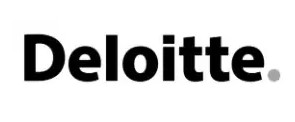Over the years, office spaces have undergone significant changes—transformations that have made office work more efficient, practical, and enjoyable for employees. Maars delves into the history of office spaces, starting in the 20th century and moving toward today’s modern, circular, and modular offices.
1. Office Spaces in the 20th Century
Early 20th Century: Traditional Office Buildings
In the early 20th century, traditional office buildings were characterized by strict hierarchies and formal layouts. Interiors featured heavy wooden furniture, such as roll-top desks. Private offices were reserved exclusively for executives, while employees worked in shared spaces with tightly organized desks which left little room for collaboration or creativity.

Mid-20th Century: Open Office Concept
By the mid-20th century, the open office concept began gaining popularity. Large, open spaces were introduced to foster collaboration and communication. Cubicles also made their debut, aiming to provide some degree of privacy. Wooden furniture gave way to steel desks, and fluorescent lighting became standard, marking a shift towards functionality over aesthetics.

2. The 1970s, 80s, and 90s
Vibrant workspaces in the 1970s
In the 1970s, drab gray office spaces were replaced with colorful interiors reflecting the flower-power era. It was also during this time that telephone lines became a common feature in offices.
The Rise of Flexible Workspaces in the 1980s
The vibrant interiors of the 70s were short-lived, giving way to predominantly brown office environments in the 1980s. This decade saw the introduction of fax machines alongside typewriters and telephones in office settings.
The Dawn of Digitization in the 1990s
The 1990s heralded a revolutionary invention: computers and their associated networks, laying the foundation for workplace digitization. Enclosed office spaces became more common, offering employees increased peace and privacy.

3. The Impact of Technology in the 21st Century
In the 21st century, the drawbacks of closed office layouts became apparent, particularly their negative impact on collaboration and social interaction. This led to the resurgence of open office spaces.
The digital revolution of this era also introduced mobile working, cloud computing, and new working styles such as remote work and co-working spaces. Sustainability became a key focus, with energy-efficient designs and green buildings becoming the standard.

4. Modern Office Spaces Today
Modern offices are designed to support hybrid work models, enabling employees to work both at home and in the office. Healthy and flexible workspaces with ergonomic furniture, climate control, and high-quality acoustics enhance employee efficiency and well-being.

5. The Future: Circular and Modular Office Designs
The future of office spaces lies in circular economies and modular designs. This involves reusing materials and adopting sustainable production methods. Fully modular office layouts offer flexibility and adaptability to changing needs. Maars is already addressing these trends with innovative solutions like reusable partition walls and office pods, such as the Halo.

Maars’ Vision for the Future of Office Design
Maars envisions the future of office design going beyond hybrid work and virtual meetings. The company foresees interactive workplaces where technology and physical spaces merge seamlessly to create immersive work experiences. Virtual Reality (VR) and Augmented Reality (AR) will play integral roles in meetings and collaboration, allowing employees to be virtually present in diverse environments.
These advancements will not only enhance interaction but also inspire creativity. By designing spaces ready for these emerging work methods, Maars meets the growing demand for flexible, future-proof office solutions that blur the boundaries between physical and digital worlds.

Curious About Tomorrow’s Office Design?
Do you have questions or want to learn more about how our innovative office solutions can transform your workplace? Contact our specialists and discover the office design of tomorrow.
Contact us +31(0)341 465 211




